75 years ago, units of the American Paratroopers had already landed behind German lines in France. One such unit was the 505thParachute Infantry Regiment (PIR), a seasoned element of the 82ndAirborne Division. Some of its elements had already completed their third combat jump in about a year. Jumpmasters, including the 2/505 Battalion Commander, LTC Benjamin Vandervoort, ensured their unit hit the drop zones. Due to their prior experience, willingness to brave the anti-aircraft fire in the troop doors, preparedness to terrain associate, and tactical patience set conditions for mission accomplishment on the ground.[1] However, just because they managed to land where they wanted did not guarantee their mission would be a success.
In total, the U.S. Paratroopers numbered approximately 13,400, well below 10% of the invading land force on D-Day.[2] A Co, 1-505 PIR represented a much smaller slice, but in the midst of the chaotic first 72 hours from 06-09 June 1944, theirs is a story worth telling. Led by First Lieutenant John “Red Dog” Dolan, A Company, and the rest of the 1stBattalion, 505 PIR quickly assembled 90% of their force and headed towards their objective, La Fiere Bridge.[3]
In Cross-Channel Attack, author Gordon Harrison sums up the importance of small unit leaders and individual Paratroopers’ actions during the initial scrum of the invasion:
In the narrative to follow, the grate names drop out. Even Eisenhower and Montgomery appear seldom. In their place will be the corps and division commanders, the colonels, the lieutenants, and the privates. For the few will be substituted for the many, as the battlefield, so long seen as a single conceptual problem, becomes a confused and disparate fact—a maze of unrelated orchards and strange roads, hedgerows, villages, streams and woods, each temporarily bounding for the soldier the whole horizon of the war.”[4]
A Company fought through some significant skirmishes where 1-505 PIR lost their Battalion XO and 1LT Dolan lost his assistant Platoon Leader and RTO. Around daybreak, they managed to link in with a group of about 300 Paratroopers from the 508thPIR, including the Assistant Division Commander, Brigadier General James “Slim Jim” Gavin, and a contingent of 45 Troopers from the 507th.[5] They converged on a manior, or manor, near the east side of the Merderet River and La Fiere bridge. The manior consisted of a farmhouse and surrounding buildings, barns, and pens.[6]
German resistance from 10-12 Soldiers holed up in the compound resulted in a confusing gunfight. Americans engaged the buildings from three separate directions with disparate and uncoordinated efforts. Their Paratroopers were mostly unaware of each other’s positions or strengths and tracked different German positions in windows and floors of the compound. Chaos due to poor coordination resulted in a portion of the German element surrendering, an American shot dead by a separate German element, and a final assault on the buildings by the Americans. By a little after 0900, the Paratroopers held the manior and a foothold of the east side of La Fiere bridge.[7]
After consolidation on the manior, A Co, 1-505 PIR established fighting positions on the east side of La Fiere bridge on either side of the manior buildings, on both the north and south side of the road. 1LT Dolan ordered A Company to dig defensive fighting positions about 75 meters wide. Meanwhile, MAJ Kellam, the 1-505 PIR Battalion Commander, had other elements of 1-505 establish supporting positions to the rear of A Co, including the 307thEngineer Battalion. They set up a 57 mm anti-tank gun brought in by a glider the morning of D-Day about 150 meters to the rear of the A Company element to provide supporting fires across the bridge.[8]
A Company’s defenses near La Fiere bridge consisted of two, two-man bazooka teams set up near the marsh on the north and south sides of the eastern bridgehead. Bazooka gunner PFC Lenold Peterson occupied a position on the south side of the bridge with his assistant gunner, PVT Marcus Heim, Jr., while gunner PFC John Bolderson and assistant/loader PVT Gordon Pryne occupied the position to the north.[9] They also barricaded the bridge on the east side with an abandoned truck found nearby and emplaced anti-tank mines beside the truck and across the bridge. They trained their direct fire weapons and mortars on engagement areas focused on dismounts to supplement the bridge preparations for enemy vehicles.[10]
At approximately 1345, elements of the 507thPIR, which had Paratroopers scattered across both sides of the Merderet River, attempted to seize the west side of the causeway and the small town of Cauquigny.[11] Most of the element which made the assault eventually departed north to link up with a surrounded element of 2-507thPIR led by LTC Timmes on the west side of the bridge. Shortly after their movement, the small element would be overrun by a German counterattack. By 1600, elements from the western bridgeway began falling back, warning A Company of incoming tanks and troops.[12]
Shortly after the warning, artillery and mortars began falling around the A Company fighting positions. As the indirect attack lifted, three French Renault tanks seized by Germans back in 1940 began creeping across the causeway towards La Fiere bridge and the A Co positions.[13] The first tank got within 40 meters from the bridge when the tank commander or driver likely spotted the mines emplaced by the Americans. The tank commander then made a fatal error by stopping the tank and opening his hatch to get a better look. The dug-in Paratroopers opened fire, cutting the leader down in the hatch.[14]
In the ensuing melee, the A Co bazooka teams got to work. Springing into action both bazooka teams opened up on the tanks canalized on the causeway. Moving to exposed positions from their foxholes, the gunners and loaders put bazooka rounds on the first two tanks as fast as they could, eventually disabling both along the causeway, setting them on fire and killing the crews. The 57 mm anti-tank gun, put into action from the support by fire position, managed to destroy the third tank.[15]
Private Marcus Heim described the event in simple terms, but by a Paratrooper who understood the importance of holding the bridge:
“Our job was to be in the forward position with our bazooka and stop the Germans from using La Fiere bridge. This we accomplished despite the tremendous and continual firing by the enemy. When the Germans retreated, Peterson and I were still in our positions at the bridge, and as we looked around we could not see anyone so we moved back to our foxhole… We found later that of the few men holding the bridge, most were either killed or wounded… This was one of the toughest days of my life. Why Peterson and I were not wounded or killed, only the Good Lord knows why.”[16]

As a result of their actions during the German attack, all four members of the two bazooka teams, all survivors of the battle despite their heroic actions, received the Distinguished Service Cross. After A Co and its supporting element destroyed the enemy vehicles, the Germans pulled back towards Cauquigny and set up their own defensive positions. Intermittent artillery and mortar barrages would continue for the rest of the day and into the night. A Co. successfully repulsed the attack around 1700 on the 6thof June and would not face another attempt by the Germans that night.
Unfortunately, the Battalion Commander and Operations Officer were not as lucky as the bazooka teams. As MAJ Kellam and CPT Roysdon arrived to the bridge as a result of the bazooka teams requesting an ammo resupply, a German mortar attack rained in on their position. A mortar round landed near both, killing the Commander instantly and knocking CPT Roysdon unconscious. He would later die of his wounds later in the day. At this point in the fight, 1LT Dolan assumed command until the 505thRegimental Executive Officer, LTC Mark Alexander would be appointed to take charge of the battalion later in the evening.[17]

On the morning of the 7thof June, Another indirect barrage came in around 0800 and lasted for two hours. Around 1000, the Germans launched another attempt at taking back the eastern side of La Fiere bridge, and ran into A Co, along with B, C, and HHC of the 1-505thPIR. Two additional French Renault tanks and approximately 200 German soldiers began moving towards La Fiere bridge. Coming across the causeway, the bazooka teams, machine guns, and 57 mm anti-tank guns fired on the tanks, disabling the lead tank. At this time, the causeway road was littered enough with German tanks and the treeline, that the German infantry managed to get within 40 meters of the bridge and the A Co positions.
After repulsing the counterattack on D-Day, the night indirect barrages, and the ongoing German assault, A Company was in bad shape. 1st Platoon lost their Platoon Leader, 2LT Oakley, which eventually found SGT William Owens, a squad leader, in charge of the 15 men from their platoon still capable of bearing arms. Due to suffering high numbers of casualties and running alarmingly low on ammunition, the will of some of the Paratroopers began to waiver. Many contemplated falling back to safer positions further east towards Saint Mere Eglise and requested to fall back. During this time, small unit leaders faced pressure from their fatigued and scared subordinates shifting their focus on self-preservation.[18]
A Company Rifleman, Robert Murphy, described the feelings of that day:
“Unless you have faced the grim reaper in the form of an oncoming enemy, it is hardly possible to understand the fear and dread that runs through the mind of a frontline infantryman. You pray. You have the fear of death on your mind. You are watching armed men and tanks coming at you. Artillery and mortar explosions and shrapnel are flying through the air all around you. There is no thought in your mind to get out of your hole and run, because you know you would be cut down by rifle or shrapnel fragments. That fear doesn’t end or leave you until you get a chance to open fire with your weapon directly at the enemy . . .”[19]
In the bleakest moment for A Company on the morning of June 7th, SGT Owens sent Private Murphy as a runner to 1LT Dolan’s position to let him know the platoon ran low on ammo and would not be able to hold their positions much longer. 1LT Dolan responded by telling Private Murphy, “No stay where you are.”[20] He then scribbled a note to Sergeant Owens, handed it to Private Murphy, and sent him back through the hail of gunfire. Sergeant Owens read the note, telling the platoon they would remain in place. Lieutenant Dolan’s response to 1stPlatoon’s request to displace stated, “We stay. There is no better place to die.”[21]
Lieutenant Dolan’s A Company and the rest of the 1-505thPIR, despite calls for reinforcements, continued to hold. Within minutes of the Owens/Dolan note exchange, the Germans finally broke, raising a Red Cross flag and requesting a ceasefire to police up their dead. During the lull in the fighting, A Co and the rest of the 1-505thPIR consolidated their forces as best they could and prepared for another counterattack. The Germans never tried again on the 7thof June, and that evening, the 325thGlider Infantry Regiment and forces of the 507thPIR relieved A Company.[22] Two days later, on the 9thof June, the 325thand 507thwould make their offensive across the causeway at a huge cost of life as well, and eventually took Cauquigny.
A Company, 1-505 PIR suffered significant casualties during their defense of La Fiere Bridge, specifically on the 6thand 7thof June, seizing the eastern side of the causeway and refusing to retreat in the face of some tough counterattacks and indirect fire. Their actions denied a determined German force seeking to reach its forces in Saint Mere Eglise and pushing the Americans off Utah Beach. However, this came at a steep cost. All told, A Company, 1-505thPIR assembled 147 Paratroopers in the early morning hours of D-Day. By June 10th, they suffered 46 killed in action and 81 wounded, over an 86% casualty rate for the company.[23]

Army Historian, S.L.A. Marshall would later call the fighting at and near La Fiere bridge as “probably the bloodiest small unit struggle in the experience of American arms.”[24] While some may argue against this claim, no one can deny the grit, determination, and courage of A Co, 1-505thPIR. It is hard to believe such significant fighting occurred at such an insignificant piece of geography, in what would otherwise be just another bridge over a small river in the Norman countryside of France. While this account focuses on the actions of a singular company of Paratroopers, there are many stories of individuals and units who acted in similar manners throughout the entire European and Pacific campaigns of WWII. 75 years later, we should still be in awe of their daring actions, honor their sacrifice, and guard the liberties and freedom they treasured so much they were willing to die for it.
[1]Robert Murphy, No Better Place to Die: Ste. Mere-Eglise, June 1944, The Battle for La Fiere Bridge, (Casemate, Philadelphia, 2009), 42.
[2]LoFaro, Sword of St. Michael: the 82ndAirborne Division in WWII, (Da Capo Press, Cambridge, MA, 2011), 204.
[3]Ibid.
[4]LoFaro, 199.
[5]Murph, 52-54.
[6]Flint Whitlock, “Airborne at La Fiere: Slugfest in Normandy,” Warfare History, published 15 December 2016, accessed 31 May 2019, https://warfarehistorynetwork/daily/wwii/airborne-at-la-fiere-slugfest-in-normandy/.
[7]Whitlock, 8.
[8]LoFaro, 228.
[9]Murphy, 68.
[10]LoFaro, 228.
[11]Whitlock, 9-10.
[12]Whitlock, 10.
[13]Murphy, 94.
[14]Murphy, 71.
[15]Murphy, 72-74.
[16]Murphy, 145.
[17]Murphy, 74-75.
[18]Murphy, 94-97.
[19]Murphy, 95.
[20]Murphy, 98.
[21]Ibid.
[22]Ibid., 98-99.
[23]Keith Nightingale, The Taking of La Fiere Bridge, accessed 02 June 2019, made publicly available for a unit staff ride by the author.
[24]Whitlock, 1.
_________________
This first appeared in The Havok Journal on June 7, 2019.
Mike Kelvington grew up in Akron, Ohio. He is an Infantry officer in the U.S. Army with experience in special operations, counterterrorism, and counterinsurgency operations over twelve deployments to Iraq and Afghanistan, including with the 75th Ranger Regiment. He’s been awarded the Bronze Star Medal with Valor and two Purple Hearts for wounds sustained in combat. He is a graduate of the United States Military Academy at West Point, a Downing Scholar, and holds masters degrees from both Princeton and Liberty Universities. The views expressed on this website are his own and do not necessarily reflect those of the U.S. Army or DoD.
As the Voice of the Veteran Community, The Havok Journal seeks to publish a variety of perspectives on a number of sensitive subjects. Unless specifically noted otherwise, nothing we publish is an official point of view of The Havok Journal or any part of the U.S. government.

© 2023 The Havok Journal
The Havok Journal welcomes re-posting of our original content as long as it is done in compliance with our Terms of Use.

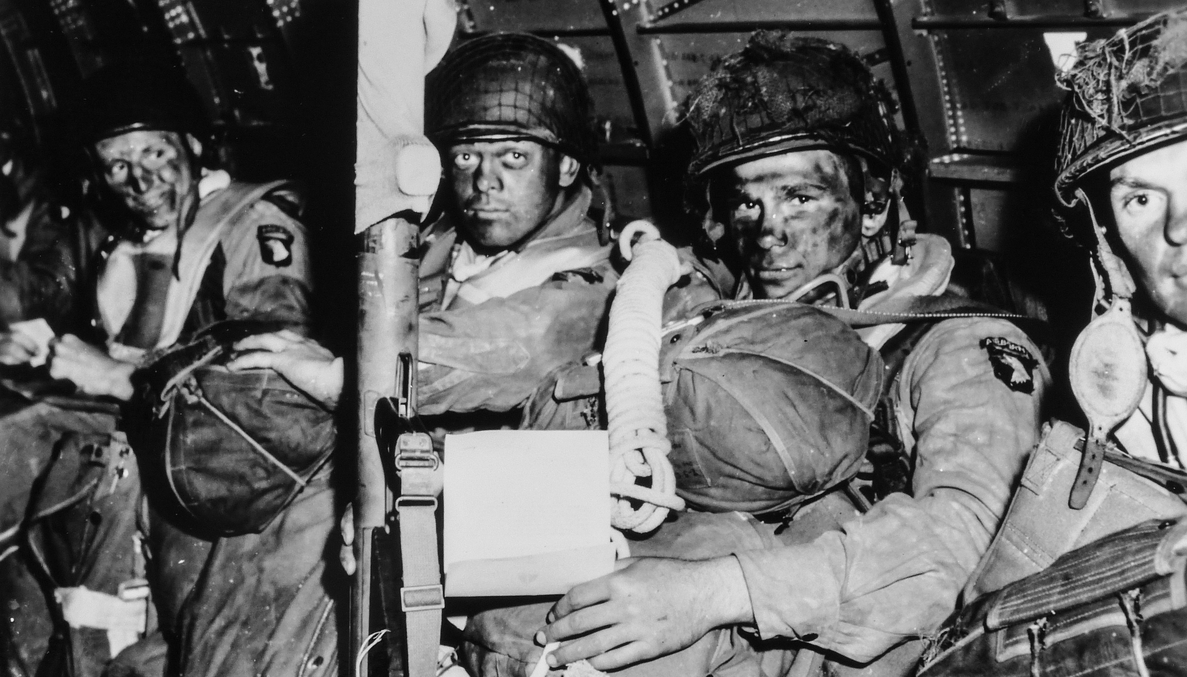


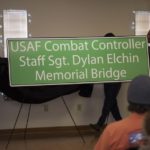
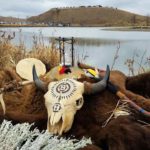
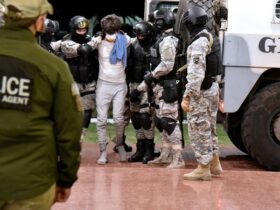

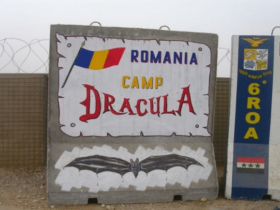
Leave a Reply